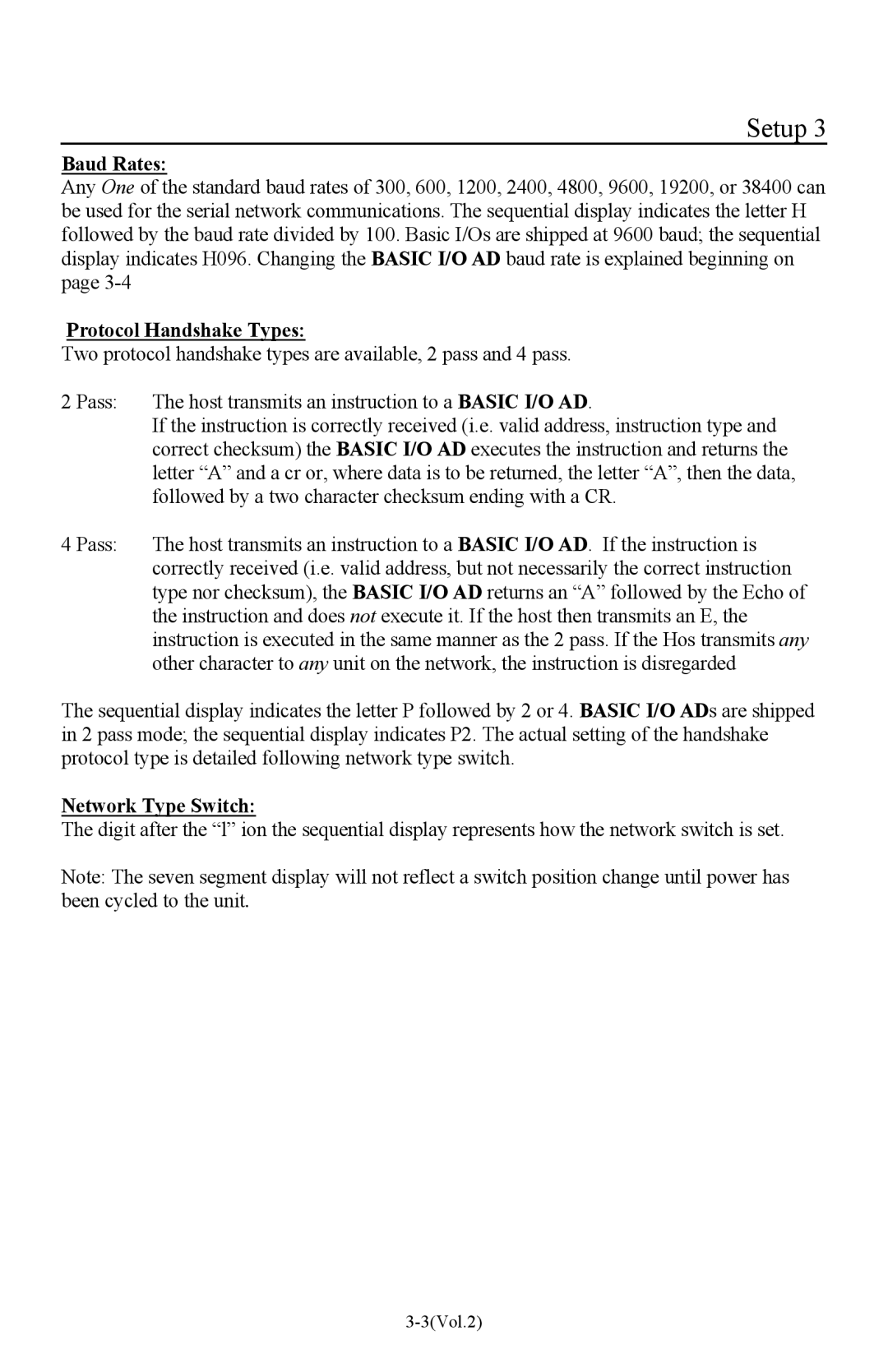Setup 3
Baud Rates:
Any One of the standard baud rates of 300, 600, 1200, 2400, 4800, 9600, 19200, or 38400 can be used for the serial network communications. The sequential display indicates the letter H followed by the baud rate divided by 100. Basic I/Os are shipped at 9600 baud; the sequential display indicates H096. Changing the BASIC I/O AD baud rate is explained beginning on page
Protocol Handshake Types:
Two protocol handshake types are available, 2 pass and 4 pass.
2 Pass: | The host transmits an instruction to a BASIC I/O AD. |
| If the instruction is correctly received (i.e. valid address, instruction type and |
| correct checksum) the BASIC I/O AD executes the instruction and returns the |
| letter “A” and a cr or, where data is to be returned, the letter “A”, then the data, |
| followed by a two character checksum ending with a CR. |
4 Pass: | The host transmits an instruction to a BASIC I/O AD. If the instruction is |
| correctly received (i.e. valid address, but not necessarily the correct instruction |
| type nor checksum), the BASIC I/O AD returns an “A” followed by the Echo of |
| the instruction and does not execute it. If the host then transmits an E, the |
| instruction is executed in the same manner as the 2 pass. If the Hos transmits any |
| other character to any unit on the network, the instruction is disregarded |
The sequential display indicates the letter P followed by 2 or 4. BASIC I/O ADs are shipped in 2 pass mode; the sequential display indicates P2. The actual setting of the handshake protocol type is detailed following network type switch.
Network Type Switch:
The digit after the “l” ion the sequential display represents how the network switch is set.
Note: The seven segment display will not reflect a switch position change until power has been cycled to the unit.
